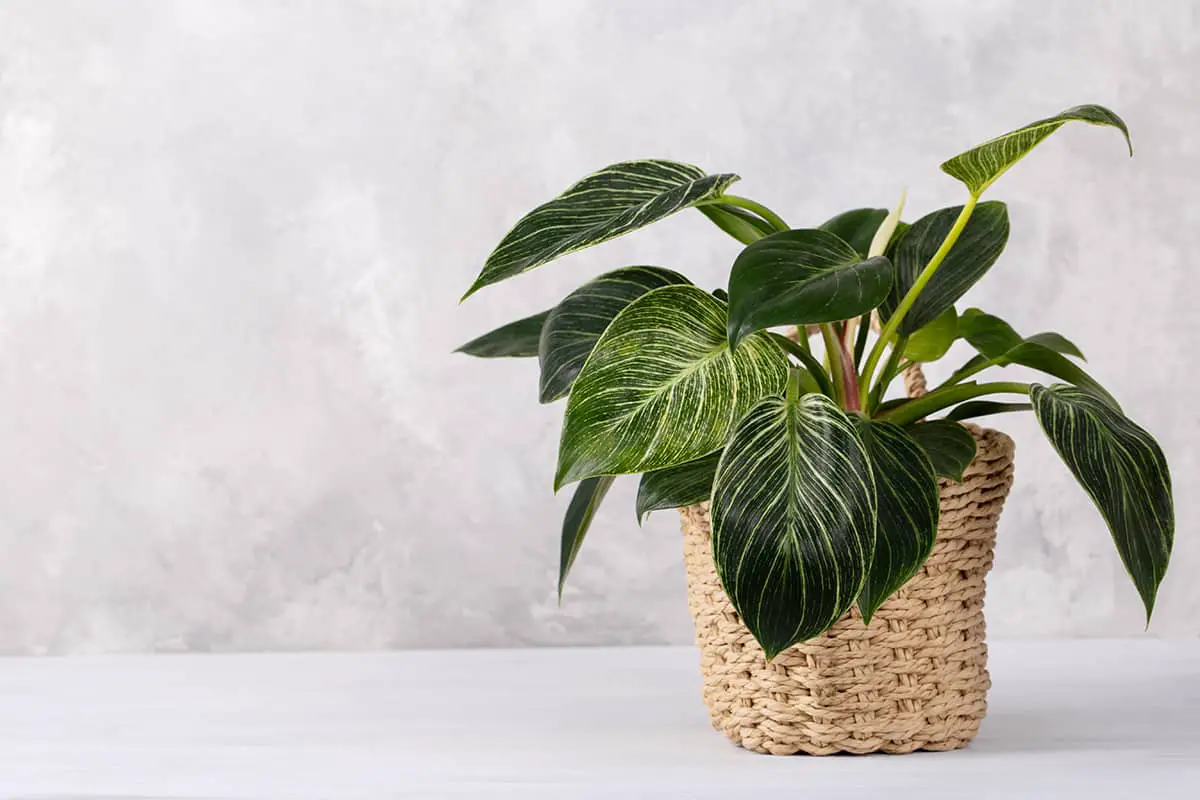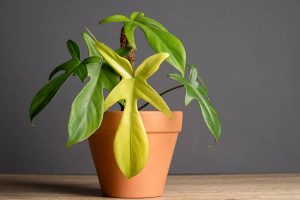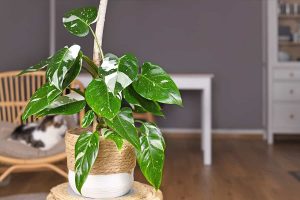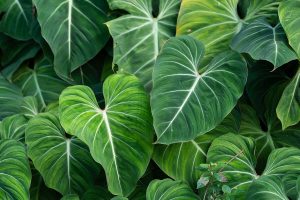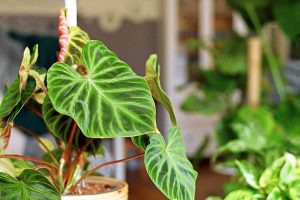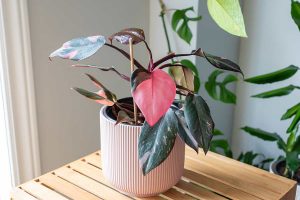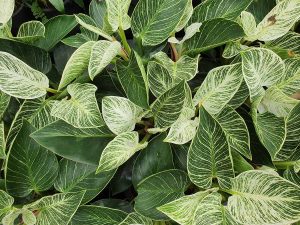This stunning Philodendron is taking the plant world by storm with its unusual creamy pinstripe variegation set against a dark green base. The trending plant is gaining a growing audience by the day, as Instagram is flooded with images of the striking foliage.
Interestingly, the Philodendron Birkin is the result of another Philodendron cultivar which mutated. The Philodendron Rojo Congo, which translates to ‘red congo’, is a hybrid with burgundy colored leaves.
It mutated to produce a green leaf with pinstriped variegation in creamy yellow, and this leaf was then isolated and propagated to produce whole plants with the variegated foliage. Since the Philodendron Birkin was formed by a spontaneous chimeric mutation, it can also spontaneously revert to its original coloring.
Many disappointed plant owners have reported paying high prices for a Philodendron Birkin, only to find that within a few months, the plant starts sending out burgundy leaves and returning to its origins as a Philodendron Rojo Congo.
Some growers consider the Philodendron Birkin to be the most unstable houseplant currently available, however, due to its impressive foliage and the ‘novelty factor’, it is unlikely to fall out of favor any time soon. It is believed that the Philodendron Birkin has only been in existence for a few years.
The earliest known traces of the Philodendron Birkin online date back to message boards in 2019 and 2020. As a very new plant, there isn’t a huge amount of information available about it. For example, the maximum mature expected height for this plant is 3 feet; however, since this is a very slow-growing plant, we may find that in a few years’ time, some examples of the Philodendron Birkin exceed this expectation.
We have used the most up-to-date information from studies across the world to compile this ultimate care guide for Philodendron Birkins.
| Botanical name | Philodendron Birkin |
| Common names | White wave, white measure |
| Plant family | Araceae |
| USDA hardiness zone | 10- 12 |
| Mature height | 3 feet |
| Mature spread | 2 feet |
Table of Contents
How to Care for Your Philodendron Birkin
Like most Philodendrons, the Philodendron Birkin isn’t especially fussy, though it is more partial to high humidity than most other Philodendrons. To find out how to provide the best level of care to your precious new Philodendron Birkin, learn all about it here.
Light
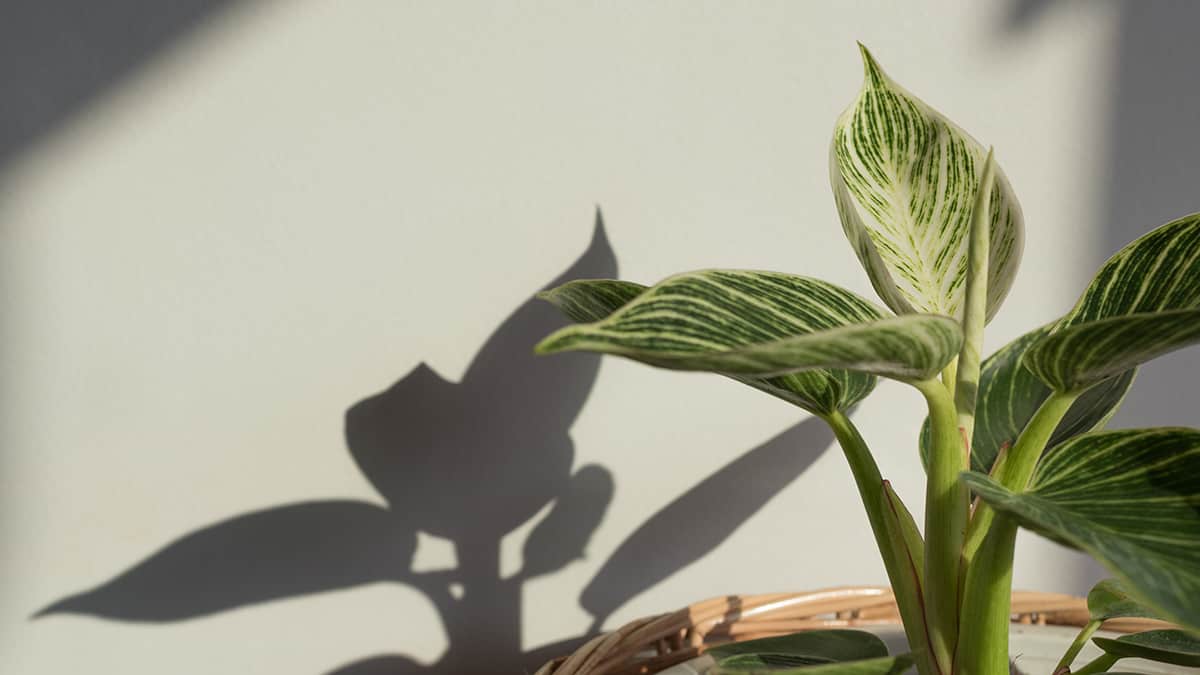
Ordinarily, the best light for a houseplant is one that mimics the type of light the plant would receive in its natural habitat.
The Philodendron Birkin does not exist in the wild, but other Philodendrons obviously do, so most growers base their lighting requirements on similar species. Since Philodendrons are tropical, low-growing plants, they generally exist under the canopy of shade provided by taller trees in the rainforest.
This means they are accustomed to some shade and some dappled light. You can recreate this lighting environment for your Philodendron Birkin by positioning it on a coffee table away from the direct light of a south-facing window or on a bright windowsill with shades to filter the incoming sunlight. Direct light will cause the leaves to discolor. However, a good amount of indirect light is needed for variegated leaves to be produced.
This is because the creamy yellow parts of the leaves do not have chlorophyll, which means the green parts of the leaves have to work harder to photosynthesize. Help your Philodendron Birkin out by allowing it plenty of indirect or filtered light and keeping it out of shaded spots.
You should also wipe the leaves of the Philodendron Birkin clean at least once a month to remove any build-up of dust, which could prevent adequate amounts of light from reaching the plant.
Soil
The soil of a Philodendron Birkin needs to be well-draining. Use a pre-mixed soil intended for succulents, or add a few handfuls of sand or perlite to your regular soil. Since Philodendron Birkins doesn’t like to sit in wet soil, a well-draining mix will ensure that water drains through easily. This will mean roots stay healthy, and root rot can be avoided.
Water
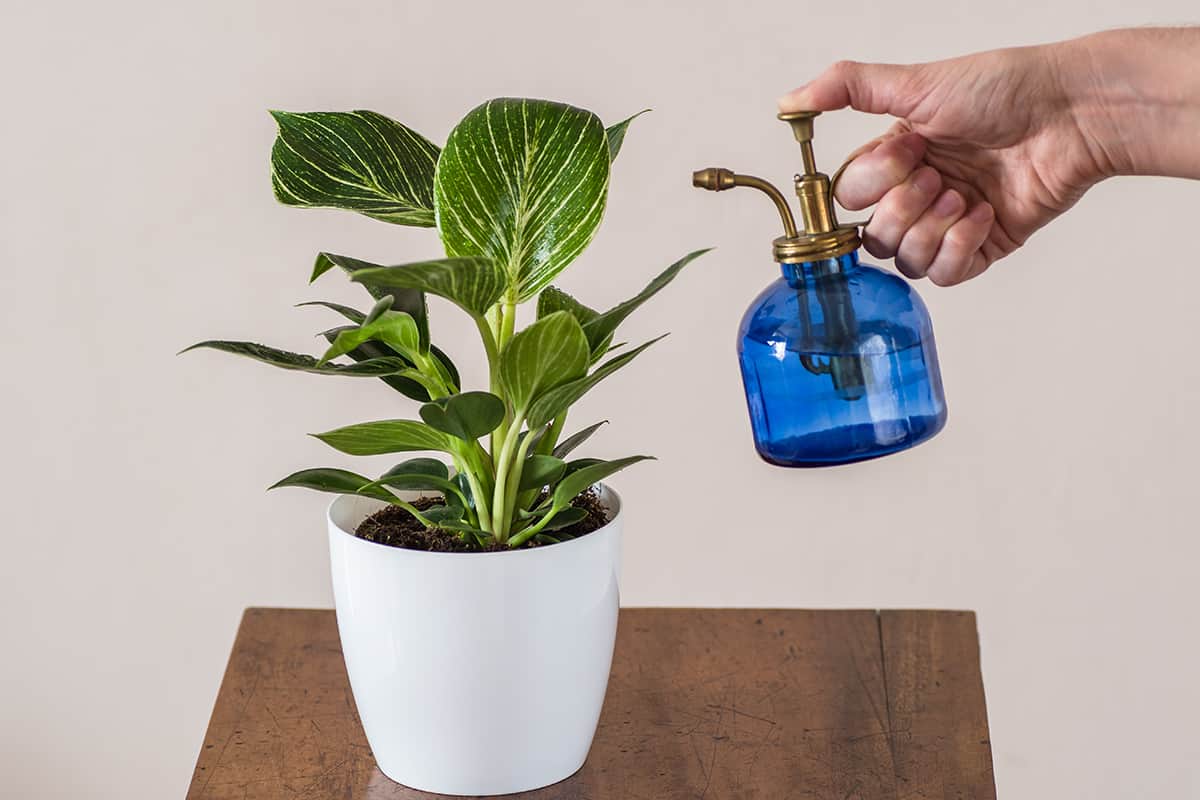
The Philodendron Birkin doesn’t have high water needs, but it also shouldn’t go without moisture for extended periods of time. You should avoid using a schedule for watering any plants since the climate conditions, size of the plant, lighting aspect, type of pot, and other factors can affect how quickly the soil dries out and needs more moisture.
However, on average, you can expect to water your Philodendron Birkin around once a week in spring and summer, decreasing to once or twice a month for the remainder of the year. Water the plant generously and then allow the soil to almost completely dry out before watering it again.
Temperature
This plant enjoys high temperatures, so it can be grown outside in USDA zones 10-12; however, it is much more commonly grown as a houseplant. The average room temperature in a home is 68°F, which is ideal for the Philodendron Birkin. It is able to cope with extreme levels of heat but struggles with lower temperatures.
It will not survive in temperatures lower than 55°F, so even when kept as a houseplant, you will need to remember to keep it away from cold draughts caused by open windows and doors or air conditioning vents.
Humidity
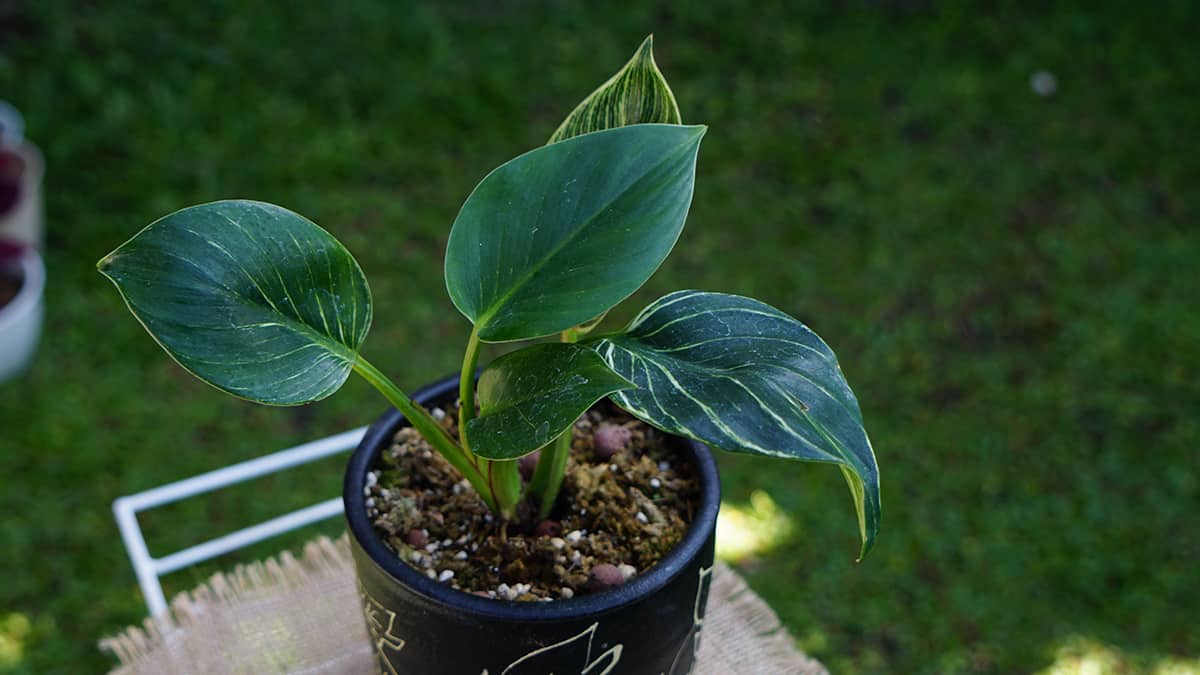
This is a plant that loves humid environments and will thrive in rooms with a humidity of 60 to 70%. It is an ideal houseplant to keep in a bathroom since these rooms have more moisture in the air due to baths and showers being used.
A spot on the kitchen windowsill above the kitchen sink could also work well, as this area will be more humid as a result of washing up and generally using the water in the sink.
If you’d prefer to keep the plant elsewhere in the home, ensure it experiences high humidity levels by spraying it with a water spritzer every day or two. You can also set the plant on a pebble tray for a more low-maintenance solution to high humidity.
To do this, set a pile of pebbles on a tray and pour water over the top, then place your plant pot on top of the pebbles. The water level should be low enough that the water doesn’t get sucked up by the plant through the holes in the base of the pot. As the water evaporates from the pebbles, the moisture content of the air around the plant will rise to replicate a naturally humid environment.
Fertilizer
The Philodendron Birkin is not reliant on fertilizer to survive, but it can help it to stay healthy, especially if it has been growing in the same soil for over a year since the nutrients in the soil will have depleted over time.
Use a fertilizer specifically for houseplants and follow their recommended instructions, or use a diluted all-purpose liquid fertilizer every two weeks through the growing season and none at all during fall and winter.
Philodendron Birkin FAQ’s
How long does a Philodendron Birkin live for?
These plants are very new to the market, having only been found as a result of a mutation in late 2019. As such, any existing Philodendron Birkins are, at a maximum, two years old.
Since they are so new, there is no data surrounding their expected lifespans; however, we can predict from other types of Philodendron plants that they are capable of surviving for as long as 20 years as a houseplant in ideal conditions. The care you give to your Philodendron Birkin will be the biggest factor affecting its lifespan.
Can Philodendron Birkins live outside?
Philodendron Birkins can live outside in hot climates within USDA hardiness zones 10- 12. They will also need to have other needs met, including bright indirect light and high humidity.
Are Philodendron Birkins fast-growing?
Philodendron Birkins are known to be very slow-growing plants, which is one of the things that makes them even more appealing as a houseplant. You can choose a nice pot for your plant in the knowledge that it will be able to remain there for several years without needing to be repotted in a larger container.
Will my Philodendron Birkin revert?
These are unstable plants that have the potential to revert back to their original dark red-colored foliage, and it’s impossible to predict if this is going to happen to a plant or not. As these plants are so new to the market, there is little research and evidence which looks at the likelihood of a Philodendron Birkin reverting back to a Philodendron Rojo Congo.
If your Philodendron Birkin starts to send out red leaves, this is a sign that it is reverting. This could look like a solid red leaf, or it may be a partially red patch on an otherwise variegated leaf.
You can attempt to reverse this by cutting the plant back and removing any signs of the red leaves, but success rates with this can vary. Alternatively, enjoy the plant for what it is, with a mix of variegated and red foliage.
What is the Best Way to Propagate Philodendron Birkin?
One of the best ways to propagate a Philodendron Birkin is by taking stem cuttings. This involves selecting a healthy stem, ideally around six inches long, and cutting just below a leaf node.
Afterward, remove the leaves from the bottom half of the stem. You can then place the cutting in water to allow roots to develop or directly plant it in soil.
